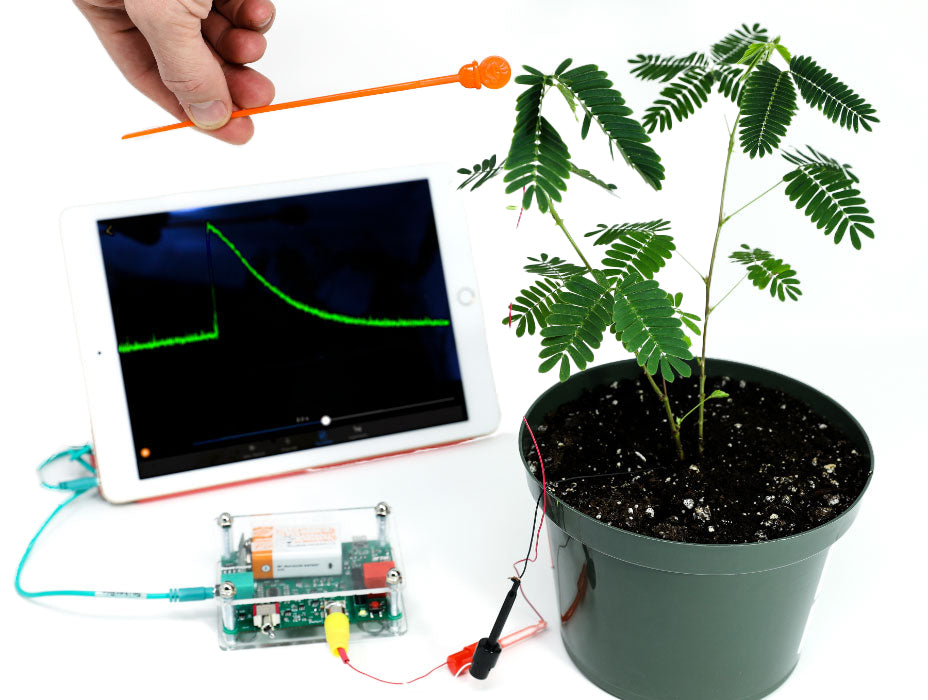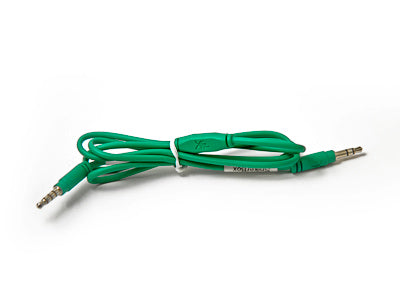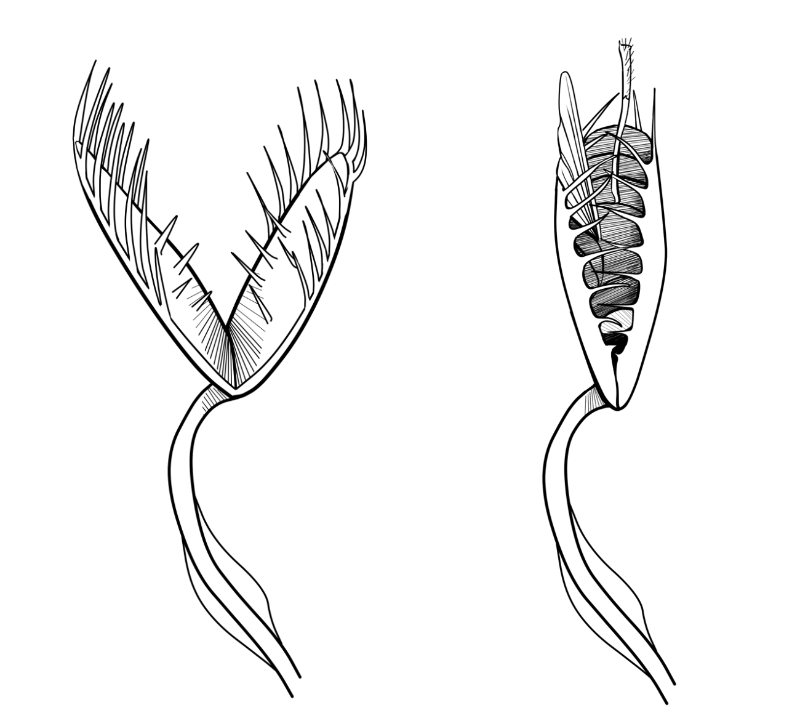
Venus Flytrap Electrophysiology

Electrical impulses aren’t exclusive to animals. Plants such as the Venus Flytrap also use electricity to sense and react to the world. In this experiment, you’ll record action potentials from a Venus Flytrap and discover how a plant knows it’s an insect moving inside the trap.
About experiment
What Will You Learn?
- How plants use electrical signals to sense and respond to stimuli.
- How a plant knows it’s an insect moving inside the trap.
- How to record and analyze plant action potentials with the Plant SpikerBox.
- Key differences between plant and animal electrophysiology.

Background
The Venus Flytrap is a carnivorous plant that supplements its diet by trapping and digesting insects—an ingenious solution to the nutrient-poor swamps of North Carolina. Instead of growing deep roots to find scarce minerals, the Flytrap hacked nature by extracting nutrients from animals.
How can a plant sense a fly and capture it? That sounds like something an animal would do. Do plants have brains? What even counts as a brain? In this experiment you’ll tackle these questions and uncover the physiology behind the Flytrap’s lightning-fast snap.
Experiment
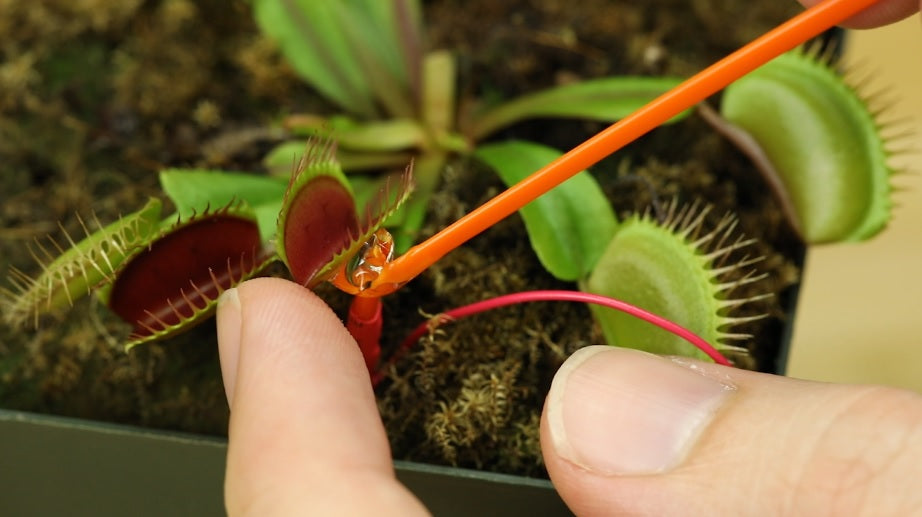
Record Electrical Signals From a Venus Flytrap
Materials:
- Plant SpikerBox with orange stake electrode, short ground pin, yellow RCA clip electrodes, and electrode gel
- Android device or laptop (USB) – iOS works with headphone-jack + green cable
- Healthy Venus Flytrap (try California Carnivores or local science shops)
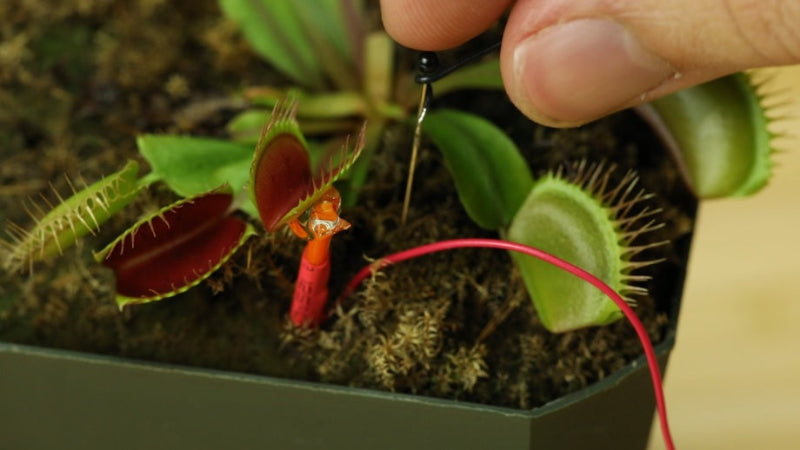
Step 1 – Insert the Ground Electrode
Insert the black ground pin into the pot’s soil so the Plant SpikerBox has a stable reference.
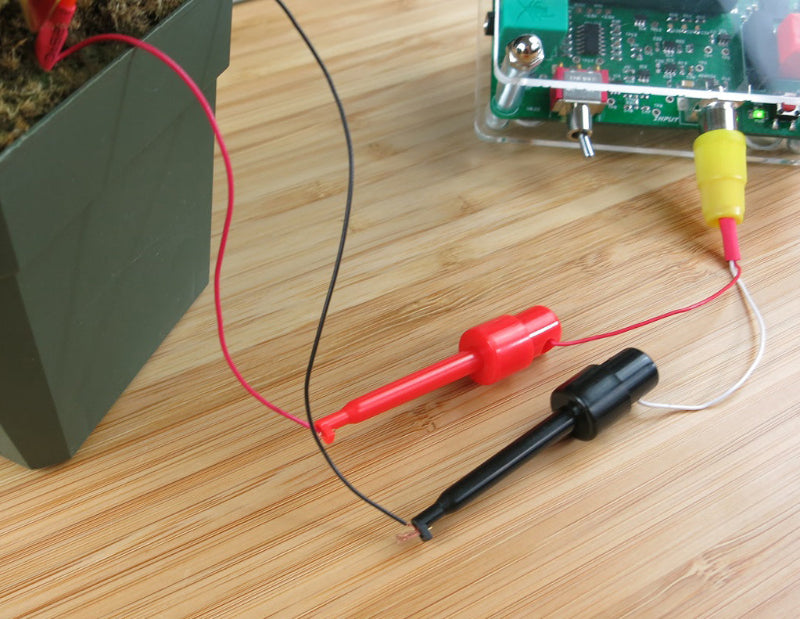
Step 2 – Attach Clip Leads
Connect the yellow lead to the Plant SpikerBox, red clip to the stake wire, and black clip to the ground wire. Power on the SpikerBox and launch SpikeRecorder.
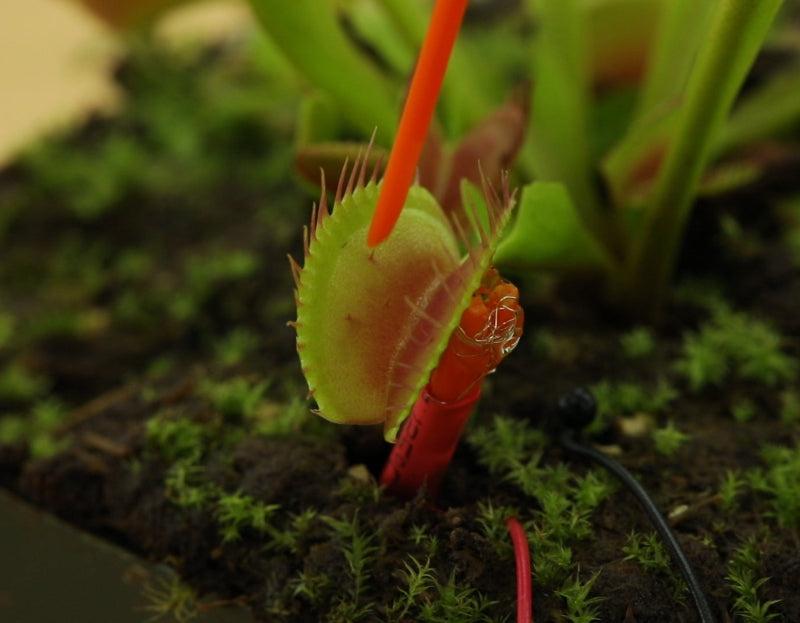
Step 3 – Trigger the Trap
Begin recording. Gently touch one of the three trigger hairs inside the trap. Wait about 60 seconds between touches—closing the trap multiple times in a row can kill that trap.
Results & Analysis
Examine your recordings. Do you see spikes that resemble action potentials? How do their shapes and timing compare with those recorded from animals such as the cockroach leg?
Observe the Flytrap’s behavior when you touch a trigger hair. Does it always respond? What patterns can you spot in the electrical signals and the trap’s movement?
What do you need?
-
Related Products


